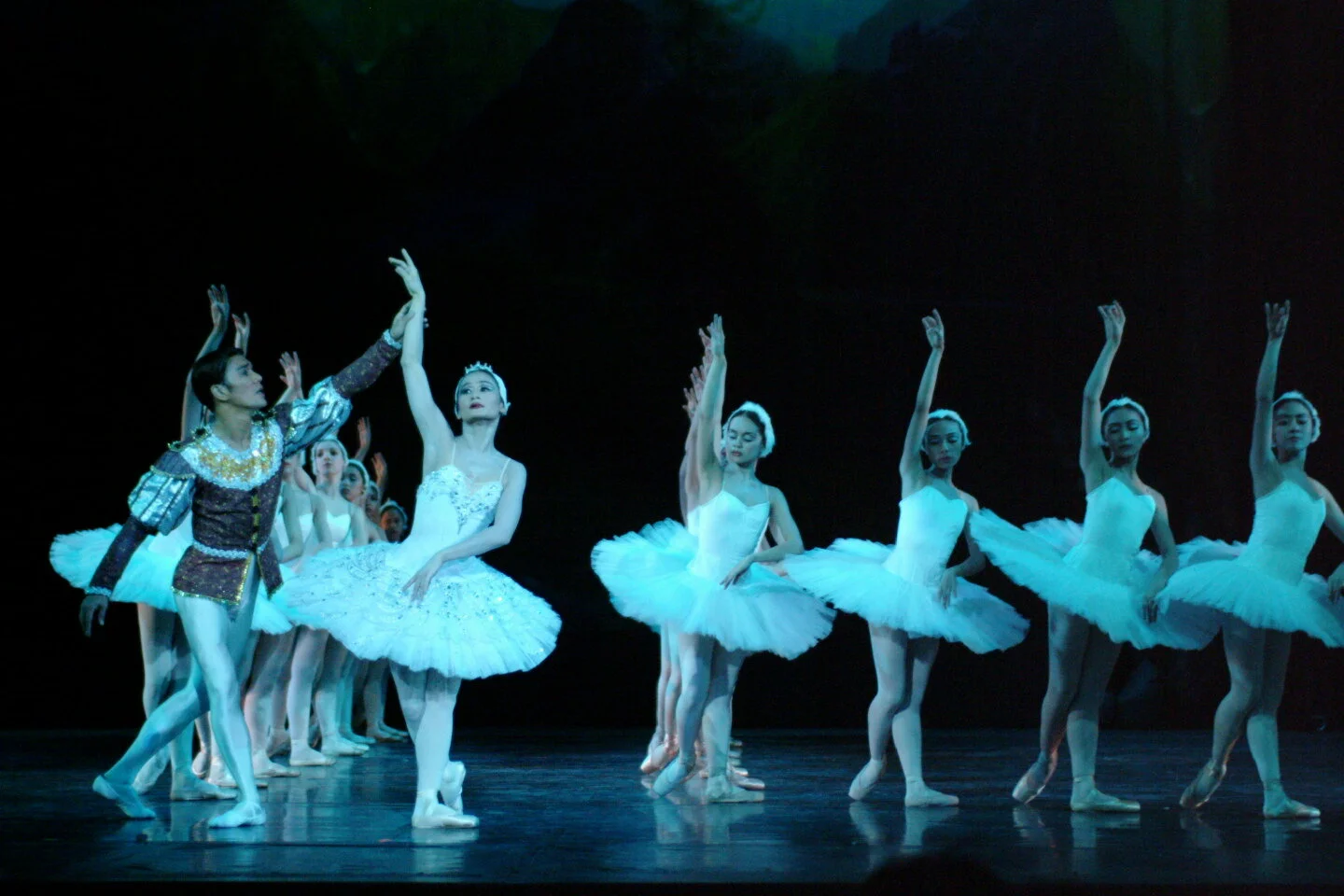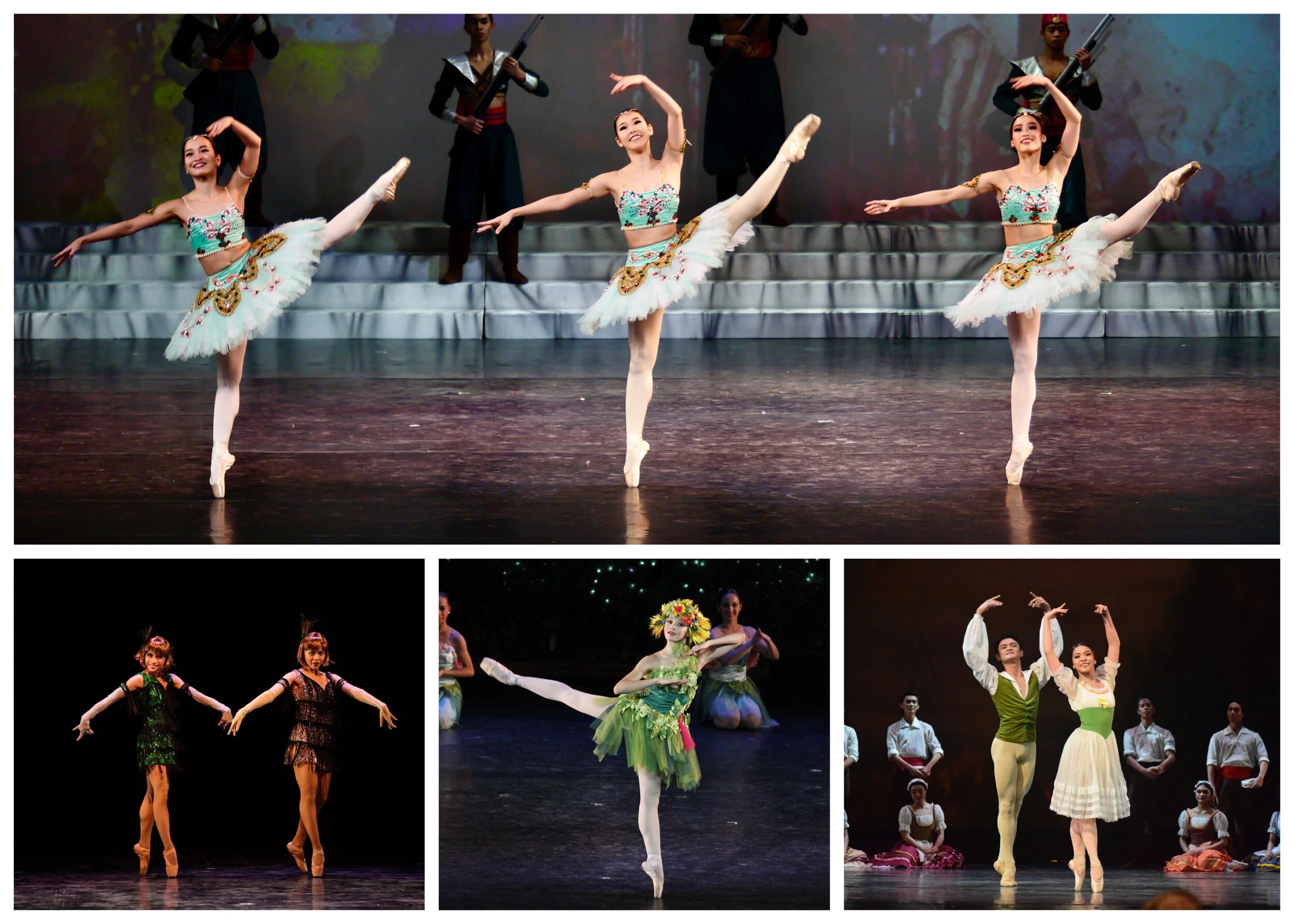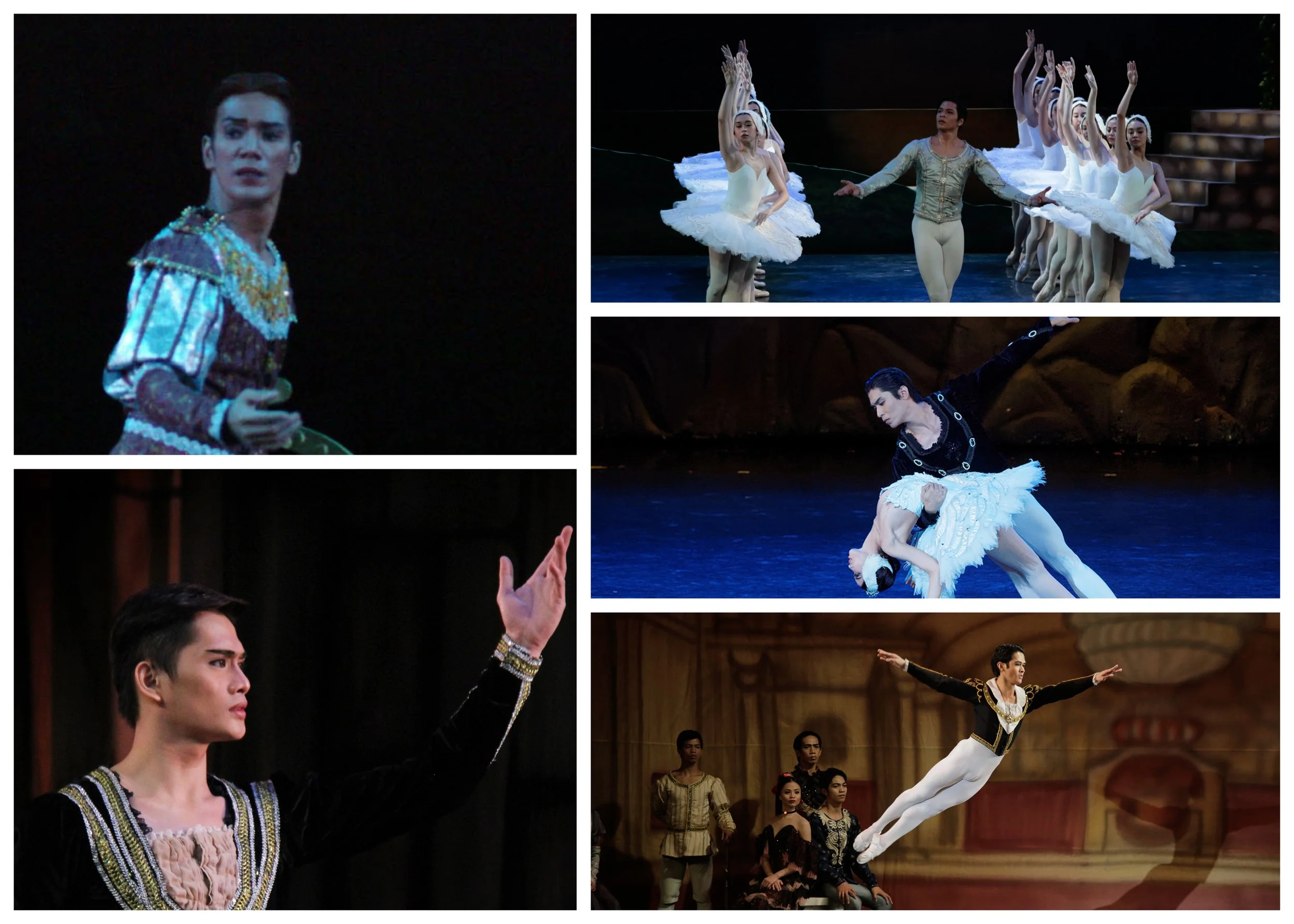Swan Lake: A failure takes flight
Former Ballet Manila dancer-turned-rehearsal master Jonathan Janolo dances as Prince Siegfried opposite Lisa Macuja-Elizalde in 2005. Photo by Ocs Alvarez
It is a story that most ballet fans know by heart. A prince falls in love with an enchanted swan but is tricked by an evil sorcerer into pledging his love to his daughter instead. The story is believed to be inspired by a combination of German and Russian folktales but Swan Lake has been applied to various art forms ranging from story books and paintings to drama and animation. Even dolls inspired by this popular tale have been produced commercially and much sought-after both by young girls and ardent collectors.
Since 2003, Ballet Manila – featuring Lisa Macuja-Elizalde and Osias Barroso in the lead roles – has been performing the full-length Swan Lake on its own. Photo by Ocs Alvarez
While the core of the story may be similar, the libretto of the original ballet version of Swan Lake, however, had twists and turns that were quite different from the tale we know and love today.
While the core of the story may be similar, the libretto of the original ballet version of Swan Lake, however, had twists and turns that were quite different from the tale we know and love today.
While the core of the story may be similar, the libretto of the original ballet version of Swan Lake, however, had twists and turns that were quite different from the tale we know and love today.
Swan Lake was the very first ballet that legendary composer Pyotr Ilyich Tchaikovsky wrote music for. It was commissioned by theater official and former artistic manager of the Bolshoi Theatre Vladimir Begichev. He is also credited for writing the libretto together with Bolshoi dancer Vasily Geltser.
In the original production, Odette is a swan maiden, the daughter of a fairy and a knight. Her evil stepmother is a sorceress who tries to kill her but is not successful because she is protected by a magical crown. Odette and Prince Siegfried fall in love but Siegfried is tricked by the demon Von Rothbart into betraying Odette for his daughter Odile. Determined to never part, Siegfried removes Odette’s protective crown and holds her as she dies in his arms. He dies with her, drowning in the waves caused by a storm.
A black and white publicity photo from 1995 shows Lisa Macuja and Osias Barroso as Swan Lake’s Odette and Prince Siegfried. Photo by Ocs Alvarez from the Ballet Manila Archives collection
Tchaikovsky was clearly inspired while writing the music for Swan Lake. He completed the score quickly with little instruction from choreographer Julius Reisinger. Though it was believed that there were some correspondences between the two men, no written documentation survived and it appeared that Tchaikovsky had a freehand on the score and Reisinger set his choreography only after the music was completed.
The Bolshoi Ballet premiered the piece in 1877 with prima ballerina Olga Nikolayeva as the Princess Regent, Sergei Sokolov as Von Rothbart, Wilhelm Verner as Wolfgang, premier danseur Victor Gillert as Prince Siegfried and Polina Palagaya Karpakova as Odette/Odile. Prima ballerina Anna Sobeschanskaya was originally cast as Odette/Odile but was withdrawn allegedly due to a scandal involving a government official.
The review was overwhelmingly negative. Among the biggest criticisms were the performance of the dancers and the orchestra, as well as the production design. Tchaikovsky did not escape unscathed. His music was criticized for being too complicated, too noisy, and too Wagnerian.
In 1879, Joseph Peter Hansen succeeded Reisinger as ballet master of the Bolshoi. A year later, he restaged Swan Lake with a considerable amount of tweaks to make it more acceptable to the audience but it was still not in any way a success.
Over ten years since its premiere, there was a serious discussion between Petipa and Ivan Vsevolozhsky, director of the Imperial Theatres in Saint Petersburg, to restage Swan Lake. Petipa, to Tchaikovsky’s delight, took the helm though the composer did not live to see the completed production. He died in 1893.
Prince Siegfried (Rudy De Dios) falls in love with the enchanted swan queen Odette (Joan Emery Sia) in Ballet Manila’s 2017 production. Photo by Giselle P. Kasilag
Riccardo Drigo was tasked to revise the score and received approval from Tchaikovsky’s younger brother Modeste for his efforts. This music along with a choreography of the second act of Swan Lake by Lev Ivanov was featured in a tribute concert for Tchaikovsky. The production was so well-received that Petipa and Ivanov teamed up to overhaul the entire Swan Lake ballet.
The libretto was changed into something more similar to the Swan Lake we know today. The new version premiered in 1895. Pierina Legnani danced Odette/Odile, with Pavel Gerdt as Prince Siegfried, Alexei Bulgakov as Rothbart, and Alexander Oblakov as Benno. The revised production was received positively by the Russian ballet audience.
Many productions of Swan Lake would be staged afterwards with each ballet company anywhere in the world coming up with a tweak to what is now considered a ballet classic. But all these new versions are based on the Ivanov-Petipa version of 1895, the first time that balletomanes recognized and appreciated Swan Lake.
Ballet Manila has included the full-length Swan Lake in its regular season ten times since the company was established in 1995. The company has listed over 50 performances of the full-length piece. But excerpts were also performed in season productions, particularly when the Tchaikovsky tribute piece, The Swan, The Fairy and The Princess was staged. Swan Lake variations and pas de deuxs were also regularly performed by BM during tours, productions of Ballet & Ballads, and for competitions.
The devious Odile (Abigail Oliveiro) fools Prince Siegfried (Mark Sumaylo) into thinking that she is Odette in a Swan Lake show in 2017. Photo by Giselle P. Kasilag
“For any ballet company, being able to stage a well-executed and technically proficient Swan Lake is the mark of true success – a gold standard from which all other ballets follow,” wrote prima ballerina and Ballet Manila artistic director Lisa Macuja-Elizalde in her Director’s Notes when the company performed Swan Lake in 2017. “In the early years, we would stage it with guest Russian companies because, well, we did start BM with only 12 dancers! But since 2003, we have been able to successfully perform all four acts of Swan Lake entirely on our own, bolstered by the company’s steady growth in both strength and number.”
That Swan Lake began as a failure but has reinvented itself and has evolved to be the standard by which the strength and artistry of any ballet company is measured speaks volumes of the power of art to rise from the ashes, redefine standards, and achieve success. Having survived over 100 years of criticism and change, Swan Lake has cemented its place in ballet history as one of the most beloved pieces of all time.
As part of her Swan Song Series in 2011, Lisa Macuja-Macuja makes her farewell performances as Odette/Odile opposite The Royal Ballet’s David Makhateli. Photo by Ocs Alvarez






